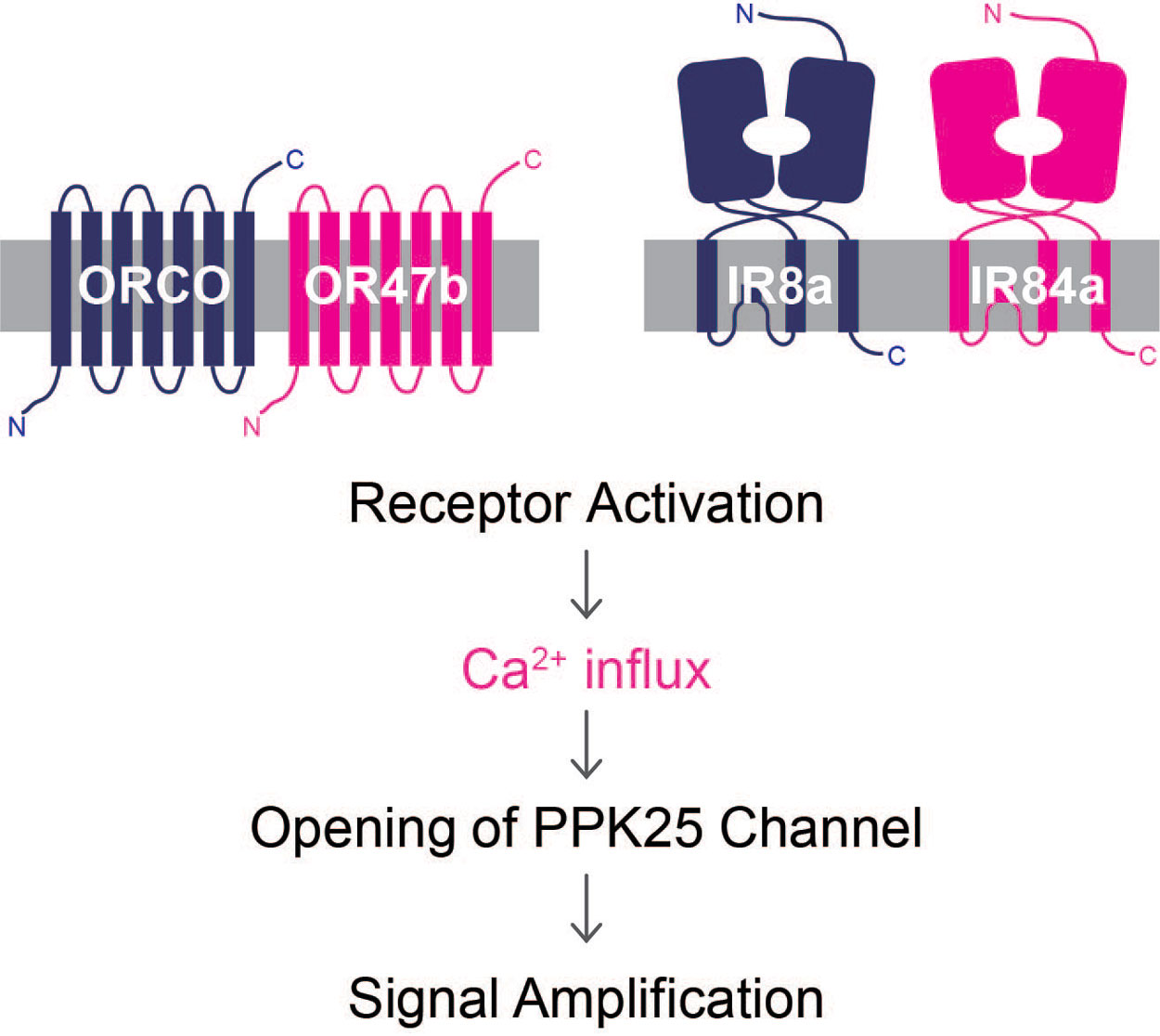Findings Bridge Knowledge Gap between Pheromone Sensitivity and Courtship
Study in flies links fertility and the response strength of pheromone-sensing neurons
October 17, 2019
By Mario Aguilera

Staff Research Associate Renny Ng and Assistant Professor Chih-Ying Su.
Just as humans use their noses for the sense of smell, insects such as fruit flies use their antennae—covered in sensory hairs called sensilla—for olfaction. In flies, the sense of smell plays a fundamental role in courtship.
Nearly 10 years ago, scientists made a significant leap in characterizing insect olfaction when they identified unique properties of the receptor proteins involved. They showed that when odor particles are detected, receptors of the insect “olfactory receptor neurons” (ORNs) function as ion channels; odorant activation directly leads to an influx of positive ions that allows cells to fire, essentially making these channels gateways for ionic flow. But in the past decade little progress has been made in understanding how the strengths of these neuronal responses are regulated.
Now, neurobiologists at the University of California San Diego have made a series of discoveries about fruit fly olfactory processing, including solving a long-standing puzzle of whether and how courtship-promoting signals are amplified by these neurons. Staff Research Associate Renny Ng, Assistant Professor Chih-Ying Su and colleagues published their results on Oct. 16, 2019 in the journal Neuron.
The researchers identified the role of a channel permeable to sodium ions. Known as PPK25, the channel amplifies courtship signals in the ORNs of male flies. Mechanistically, these findings draw further similarities between invertebrate olfactory neurons and vertebrate ORNs, which also undergo signal amplification. Biologically, PPK25 heightens males’ sensitivity to their mates’ odors at the age of peak fertility, thus promoting courtship when flies are most fertile.
“Given its evolutionary importance, courtship behavior is under tight hormonal regulation. We find that PPK25 expression is upregulated in those neurons by a reproductive hormone,” said Su, a faculty member in the Division of Biological Sciences Section of Neurobiology. “The expression level in turn determines the ORN response magnitude to impact courtship behavior. Without such amplification, male courtship is severely compromised.”

The new findings help neuroscientists bridge a knowledge gap in sensory transduction and opens doors to future research on the impact of sexual cues at the level of individual neurons.
PPK25 is a member of a superfamily of ion channels that may also employ the same amplification mechanism. The study therefore carries implications across several species beyond fruit flies, including worms, mosquitoes and even humans. In principle, the amplification mechanism unraveled in the new study could operate in other sensory modalities such as touch, temperature and hearing.
The paper was coauthored by Secilia Salem (undergraduate assistant), Shiuan-Tze Wu (graduate student), Hui-Hao Lin (postdoctoral fellow), Andrew Shepherd (research assistant) and Jing Wang (professor) of the Section of Neurobiology; and Meilin Wu (research scientist) and William Joiner (professor) of the Department of Pharmacology.
The research was supported by a Ray Thomas Edwards Foundation Career Development Award and the National Institutes of Health (grants R01DC016466, R01DC015519, R01DC016466, R01DC009597 and R01GM125080).
